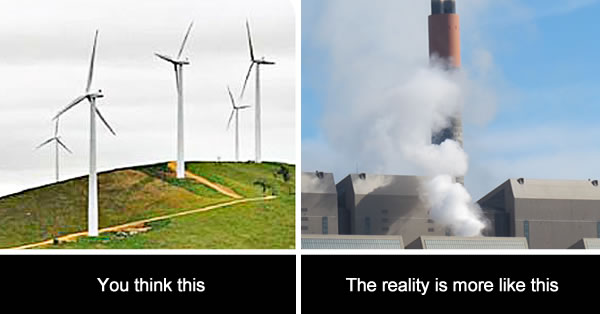John Key recently defended New Zealand’s clean, green image by pointing out that 80% of our electricity comes from renewable sources. Is this claim relevant or just a way to deflect attention away from his Government’s lack of action? Let’s look at the numbers.
Only 38% of our energy comes from renewable sources
A far more relevant statistic is what proportion of the total energy we use comes from renewable sources. This energy total includes not only electricity, but also the energy for transport and heat, which are mostly based on fossil fuels. The heat portion of this is mostly from burning coal and gas – a small amount in homes but predominantly for industrial processes like Glenbrook Steel Mill and Fonterra turning milk into milk powder.
This figure is a lot less flattering than the 80% renewable total that Key & co like to crow about, and makes us look a bit more average in international terms. Take the United Kingdom; it still generates over 60% of its electricity from fossil fuels, and yet their CO2 emissions per capita are no higher than ours. In other words, despite their low renewable electricity generation, they create the same amount of emissions from fossil fuels per person as Kiwis do.
How is that possible given our stunningly high level of renewable electricity? The difference is primarily transport – the United Kingdom has invested heavily in public transport in particular, which is helped by ensuring that new housing development is done in a denser fashion so that people are less reliant on their car to get around. Their cars are also much more fuel efficient on average. Meanwhile New Zealand builds uneconomic roads, debates shutting down Kiwirail, ditches fuel economy standards and lets our major cities sprawl. All this will make it harder to get our CO2 emissions down in the long term.
Switzerland, France and Sweden all have high rates of renewable electricity
Even if we tolerate John Key’s selective focus on electricity, we are by no means alone in terms of our high rate of renewables. Sweden and Switzerland both have rates of renewable electricity generation of over 60%. If we add in nuclear, which doesn’t generate CO2 emissions, then Switzerland, Sweden and France all have less than 10% of their electricity generated by fossil fuels. That is lower than self-proclaimed clean, green New Zealand.
And it doesn’t stop them reducing emissions
Despite this remarkable achievement, all these countries are still working to reduce emissions. Their CO2 emissions per person were already lower than ours in 1990, yet by 2012 they had reduced them further. In other words they have shown it is possible to reduce emissions from energy even when the electricity supply is virtually fossil-free. John Key take note – you have nothing to skite about.
The table below summarises their progress nicely. And remember that we are looking just at CO2 emissions (so we can’t blame agriculture) and they are emissions per person (so we can’t blame population growth):
| NZ | UK | Sweden | Switzerland | France | |
| CO2 emissions per capita 1990 | 7.5 | 10.3 | 6.7 | 6.6 | 6.8 |
| CO2 emissions per capita 2012 | 7.8 | 7.6 | 4.8 | 5.4 | 5.6 |
| % change | +4% | -27% | -28% | -18% | -18% |
| Electricity from fossil fuels (2012) | 27%
(down to 20% last year) |
68% | 2% | 1.5% | 9% |
Even the UK’s fall in CO2 emissions didn’t just come from increasing renewable electricity – they have continued to reduce their emissions from transport and heat. These countries are taking emissions reduction seriously, rather than saying we are doing fine on electricity, everything else is too hard so we’ll rely on buying cheap foreign credits to cover for our inaction.
In the long run, making excuses for doing nothing will only put us behind
So the truth is that 80% renewable electricity is no excuse for inaction – there are lots of things that we can do to reduce emissions from energy. We don’t even have to touch the sacred cow of agriculture to make a difference. Yet by setting a low target for emissions reductions, and then arguing that we will meet most of them through trading, New Zealand is falling behind.
By 2030, all the countries in the table above (including the UK) are aiming for CO2 emissions of around 3.5 tonnes per person. In contrast, based on Government modelling New Zealand is aiming for about 6.5 tonnes per person – roughly double. To get our emissions down to 3.5 tonnes per person would require a 28% reduction in CO2 emissions compared with 1990, or a 50% reduction compared with today. That is the point here – the longer we leave this stuff, the harder it gets.
More realistically, New Zealand will reach 2030 having relatively high emissions of CO2 per person, despite the fantastic head start provided to us by renewable electricity. What will we do then? Continue throwing our hands up and complaining that reducing emissions is too expensive? We really are wimps.

